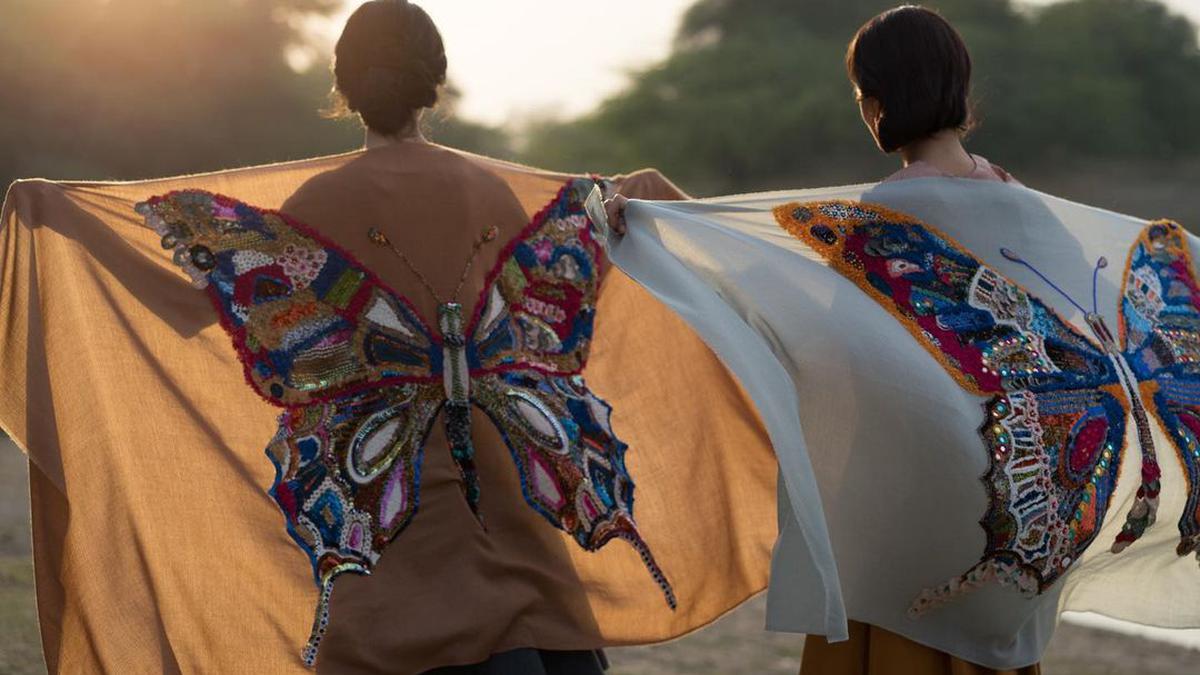
How the Indian shawl is reinventing itself
The Hindu
Explore India's rich textile heritage with traditional shawls & stoles from Kashmir, Ladakh & Gujarat, crafted by artisans with love & passion.
Earlier this year, New York-based designer Bibhu Mohapatra styled his models in cashmere stoles for his FW’23 collection at the New York Fashion Week. Collaborating with Janavi India, Jyotika Jhalani’s luxury cashmere label, he created looks that blended stoles and shawls seamlessly with dresses, pantsuits and midi skirts. From a practical accessory to becoming a statement, the traditional Indian shawl is reinventing itself in dramatic ways.
Designers have been exploring the possibilities of the shawl, contemporising its scope and pushing it to the mainstream. New designs and techniques are being tried out and ancient weaves are being revived, all the while incorporating ethical practices to bring out standout pieces that not just serve as accessories, but also tell a story — of their place of origin, the people who make them and the heritage of the region.
Jyotika’s label is an ode to her birthplace, Kashmir. When she launched Janavi India in 1998, she wanted to showcase the essence of fine Indian pashmina while appealing to a global market. “I knew I wanted to create shawls that were Indian, yet international in look and feel,” she says.
Janavi India’s design aesthetic evolved thus, using Indian-inspired embroidery and embellishments directly on fine pashmina. It experiments widely with styles — hand-painted, printed, using classic weaves and lace and embellished with crystals. “This is also why I like to call them wearable art,” Jyotika adds. She has a team of 400 artisans working at her atelier in Noida. “The shawl is so versatile. In India, every culture has one. Showcasing it in the global market, my idea was to carve a special place for the shawl — as a replacement for the trench coat and jacket. It is an easy accessory to carry and a clever one to dress up or down.” Janavi India shawls cost up to ₹1,40,000.
It has showrooms in New Delhi and is sold through international retail outlets including Bergdorf Goodman, Saks Fifth Avenue, Harvey Nichols, Liberty, Lane Crawford among others.
The Kashmiri identity is the driving force behind designer Zubair Kirmani’s label Bounipun. Zubair moved from the bustling New Delhi/NCR to his home in Srinagar four years ago, consumed by a desire to be connected to his land. “I wanted to work with artisans, I wanted to be involved in every step of the way,” he says. “A lot of pashmina products sold in market are not authentic and that brings negative impact to the trade. By working here, using local resource and talent, we want to showcase the premium pashmina from Kashmir, that is beyond the Kashmiri shawl,” Zubair adds.
His statement pieces in pashmina incorporate elements of ethnicity and folklore. Each motif is inspired by the region. For instance, his Karakul edit includes a piece that features the snow leopard, known to be found in central and north Kashmir. “With each piece, I am trying to create something that is rooted in the Kashmiri ethos, yet bears my signature,” he adds.













